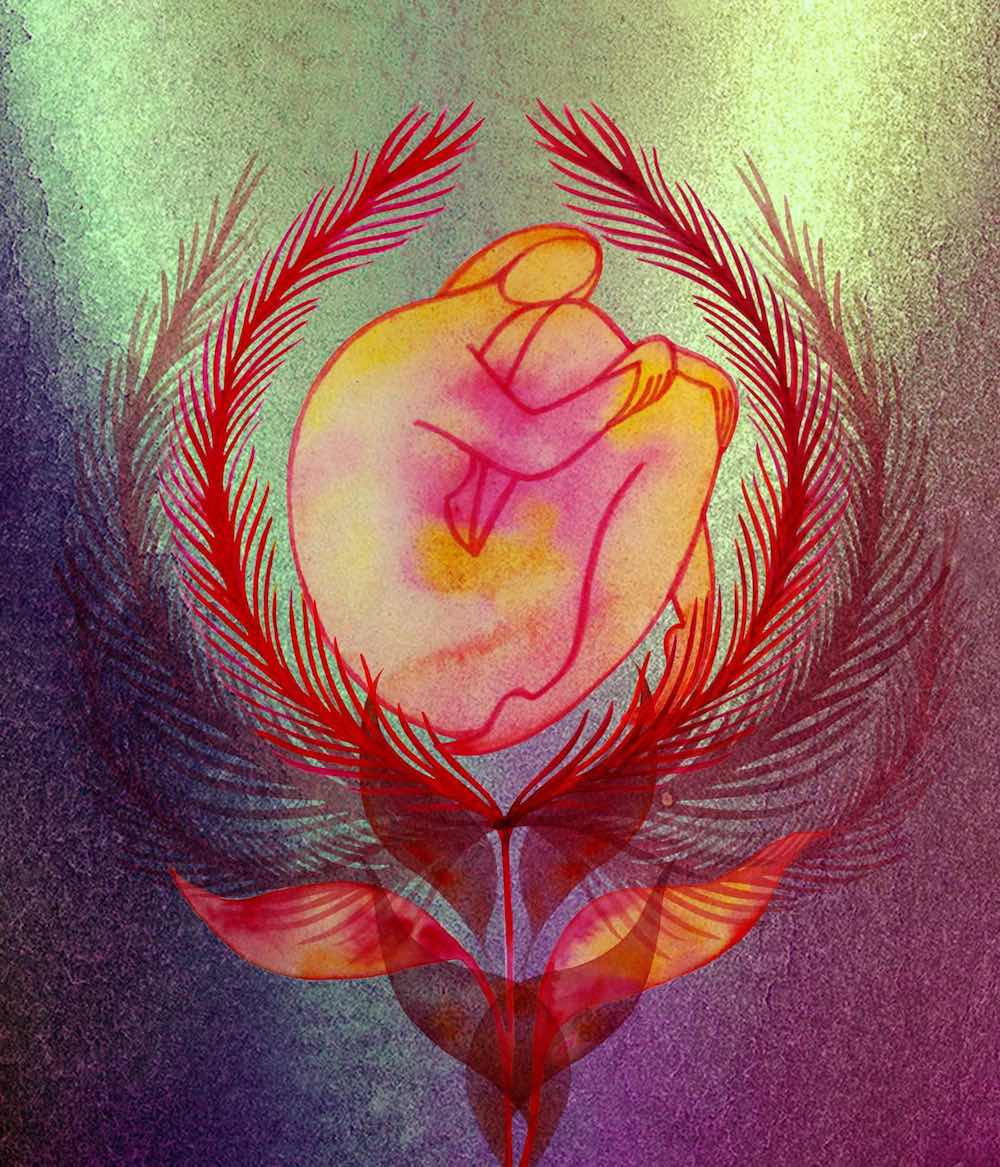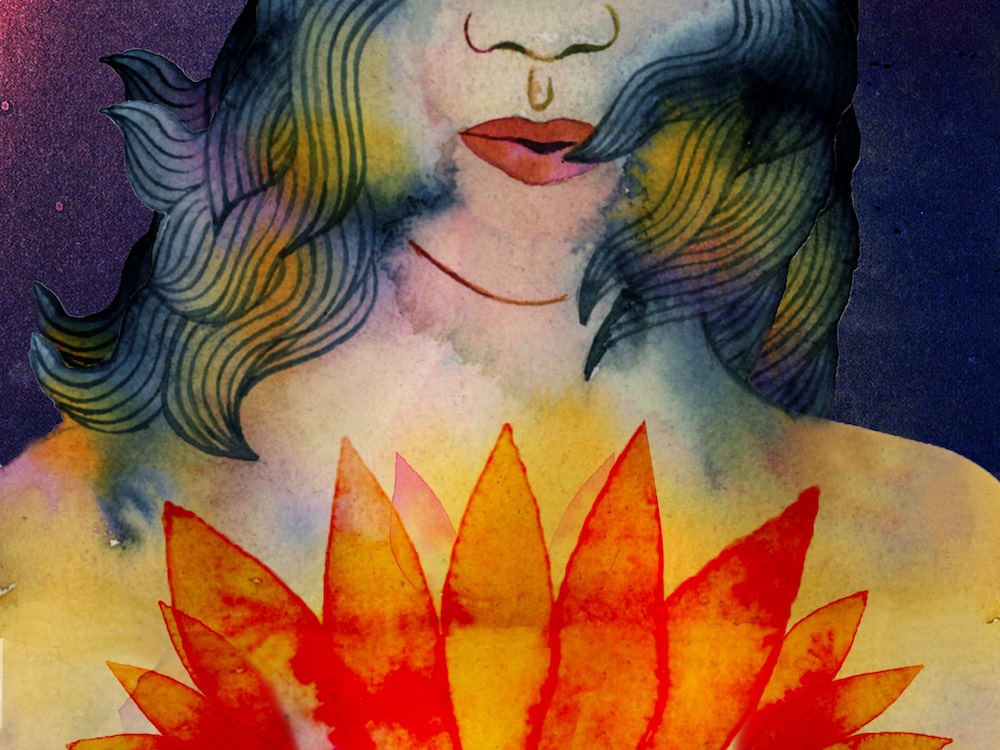Stepping into the yoga studio, I search for an empty space and gingerly place my mat down before the morning session starts. The room is noticeably warm, encased with mirrors and fragranced with lavender and eucalyptus, presumably for a soothing effect. Mimicking others in the room, I begin slowly stretching my body to prepare myself for the hour to come.
This is one of a handful of free sample yoga classes that I’ve been taking in South Surrey and White Rock over the past few weeks to acquaint myself with what each studio has to offer. In the past few years, some of the closest people in my life have built strong, enduring yoga practices that have had transformational effects on their lives.
Yoga, I’m told, is a way to connect physicality with the spiritual, to hold discipline and softness hand in hand. Clothing, appearance and aesthetics — stuff that can take up centre stage in other parts of life — are irrelevant here in the studio.
It’s the commitment to connecting with oneself that is what matters most. Practised consistently, it’s helped my loved ones usefully turn their focus away from physical appearance and truly mend their fraught relationships with movement.
As someone who has struggled to build a healthy, sustainable and fulfilling relationship with movement, this is especially inviting for me. As a kid, I never felt quite like myself in my own body. Creating versions of myself that were committed to a sport or activity helped distract me from the more nebulous anxieties related to coming of age.
I was the kid who did taekwondo until age 10, the high school volleyball player and the recreational runner. In my early days at university, I turned to slower resistance training to help cope with adjusting to life after a head injury. What resulted was a tumultuous relationship with caring for myself, pushing my body to its limits and failing to tend to my own emotional stress.
Movement is often framed as a healthy outlet of expression, and I suppose that’s true. But not all of us are built the same. Much of mainstream fitness culture pushes us to push ourselves to the limit, despite the physical and emotional toll. I followed this for years, and I’m grappling with it today.
I grew up in the age of social media. It’s hard to escape its barrage of idealized body types, fitness influencers and rapidly cycling exercise trends. At some point, I had internalized a deeply unhealthy relationship with movement, one that was hyper-critical, restrictive and frankly exhausting.
I, like many of my peers, spent hours browsing the web where strangers told me I wasn’t following the right diet, exercise plan or right lifestyle. In the summer of 2014, before I started Grade 10, 30-day fitness challenges were trending on social media. I thought embarking on such a challenge was a simple ticket to getting back in shape. I remember eating a single meal a day and pushing myself to run at least five kilometres a day, with no rest days.
Returning to school that September to newfound attention and compliments on my appearance took a toll on my mind and body that I didn’t understand at the time.
Notably, how my perception of self-worth became so tied up in how I was perceived.
Living inside an exercise commercial
Since the pandemic, and loss of access to the gym for an extended period of time, my fitness level hasn’t been the same. Every time I tried to find something new that worked with my changing body, my commitment would taper off. It was frustrating to not be able to do what I once could; a part of me felt like I was grasping hopelessly for versions of myself that simply did not exist anymore.
So here I am, sitting in this yoga studio, hopeful that I may uncover a relationship with myself and with movement that feels gentle, fortifying and non-judgemental. In other classes I’ve sampled I’m often the only racialized person in the room, including instructors. As I look around the studio today, I realize this class is no different.
The class is much more challenging than I had anticipated, and we end by laying in a final shivasana, a resting and restorative pose that typically closes out most yoga practices. Accompanied by meditative music, a sense of depletion and disorientation sinks in. The perception of yoga I had as kind, welcoming and non-judgemental is nowhere near what I have experienced. Instead, I’ve found what feels like a commercialized representation of it, a translation that doesn’t quite capture its essence.
I knew I had a lot of work to do when it came to mending my relationship between physical appearance and physical movement, and yoga seemed like a safe, accessible place to start. It shouldn’t be so hard to find, given how many people in my life have felt their lives physically, emotionally and spiritually enriched by adding yoga to their weekly routines.
And they’re not the only ones who are benefiting. After all, yoga is a mega-industry on the West Coast. In the Lower Mainland alone there are over 50 private yoga studios. And we are home to Lululemon, the multibillion-dollar Vancouver-founded athletic apparel company with 12 stores on the West Coast, emblematic of the rise and pervasiveness of commercialized wellness in Vancouver.
Despite my best hopes otherwise, I still felt out of place in a lot of the yoga studios I visited. I noticed a lack of modifications for movements that weren’t accessible for beginners. I felt alienated by how commercialized and white-dominated yoga has become, without a concerted effort to share and understand its deep and complicated cultural origins.
With this in mind, I sought out something different.
A traditional approach to yoga
Before opening a studio of his own with his brother, Nalin Mann picked up gigs teaching yoga across the Lower Mainland at other established studios. He had only recently immigrated here from India in April 2022, after spending years learning about yoga through spiritual ashrams and his own daily practice.
He knew how big yoga had become in the West and was surprised when he received pushback for leading classes in the ways he had been taught in India. He wore loose, comfortable clothing rather than the form-fitting athleisure that is popular here. He chanted in his classes. But Mann felt his yoga practices made management and even some participants uncomfortable.
In light of these experiences, Mann opened Kevala Yoga in White Rock in June 2023 with the goal of sharing a traditional approach to yoga.
“I get the space and freedom to really bring traditional yoga [to people],” Mann said. “People cry, vent out and release not just physical stress but what is stuck within. It’s healing happening for them.”
New to Canada, Mann says it was tough at first to get people in the door. While they’re still struggling to fill classes, it’s clear the studio is making an impact on the community, highlighting the need for culturally informed studios in the area.
“We need more people to come in.... But it is a ripple effect and when we transform somebody's life and when they tell others about us, that is the best marketing anyone can do,” he said.
Mann isn’t the only one who has faced barriers in Vancouver’s yoga industry. Prem Kaur, co-owner and instructor at Jai Yoga Studio in Coquitlam, said she and her husband struggled to find consistent work in the city before opening their own studio.
One yoga studio told the couple they would have to complete additional yoga teacher training, and purchase a membership adding up to about $3,000 in order to teach there, despite already being qualified as yoga instructors.
Management at another studio told Kaur that she wouldn’t be a good fit as an instructor because “people want to go to classes that are led by teachers that they would aspire to look like.”
“[It was] just this realization that if we were white, if we were aesthetically what looks to be a Canadian or a North American person, things would have been different,” said Kaur. “And that was a really tough pill to swallow.”

Whether through mass marketing or the recent "low impact" fitness trend that extols the virtues of gentler movement activities like yoga on social media, I’ve found that yoga has become synonymous with a few things: flexibility, the pursuit of a thin, toned physique and whiteness.
Yoga is a traditional practice that has its roots in ancient India and Egypt. The West has co-opted it, sanitized it and sold it right back to us under the guise of wellness.
For Mann, it’s frustrating to see how yogic practices are often taken out of context. While physicality is an important aspect, it’s only one of eight principles of yoga. “The whole idea is educating and empowering people to share the actual true tradition of yoga, because… the real yoga is off your mat,” he explained.
Kaur, who first started practicing yoga with her family as a child, shares this motivation with her own work at Jai Yoga Studio, which opened in 2019 as the result of Kaur and her husband’s long-term love for the practice and frustration at the structural barriers faced by those who exist outside of the narrow, idealized archetype of a yoga practitioner. For Kaur, Jai Yoga Studio is their way of reclaiming a practice and culture that is dear to her family’s heart.
“Yoga is about community and welcoming. Yoga is about feeling good at home, in your body. We need to set this example because if we don’t do it, then who else will?”
On building inclusive wellness spaces
“Inclusivity starts with how we dress and how we greet people and how we acknowledge and validate people. It’s how we allow for culture and other parts of a person's being to come into the room,” said Farah Nazarali. She has taught yoga for over 20 years and teaches in both Nanaimo, where she lives, and Vancouver.
In conversations with yoga teachers from the city, many noted the responsibility of instructors to create a studio environment that is safe, welcoming and accessible for anyone who walks in the door, particularly folks who may have faced discrimination or exclusion at wellness spaces in the past. For yoga specifically, this can be modelled by the instructor by wearing comfortable clothing, providing movement options for all body types, and meeting each individual student where they are.
Like Mann, Nazarali explained how inclusivity can look like honouring the spiritual foundations of yoga alongside the physical ones. “The assumption [is] that yoga requires flexibility, that it’s a physical practice. There are some people who meditate or pray and the state of their consciousness is what we practice the postures for,” she said. “We can't assume that the movements and postures are yoga. It’s much bigger than that.”
Nazarali is also board chair of Yoga Outreach, a non-profit that works to expand access to trauma-informed yoga programs in the province. The organization partners with various facilities across the Lower Mainland to provide trauma-infomed programming at social service facilities, prisons, recovery centres, transition homes for women and children, and more.
According to Nazarali, trauma-informed yoga involves a participant-centred approach that is rooted in encouraging people to feel safe in their body, without assuming the teacher knows what’s best for them. Inclusive to folks who have experienced physical and emotional trauma, trauma-informed yoga classes offer more variety and choice than one may find in a traditional yoga class.
Trauma is complex, and Nazarali says building trust and safety is foundational when leading classes with those who have experienced it. She says she is grateful to see cycles of abuse and trauma being broken in real time.
“When a person who has experienced trauma learns to trust again and their heart opens up, something begins to shift and change. It is the stuff of miracles,” she said. “It’s the most remarkable thing that I’ve witnessed as a teacher.”
A new set of moves
Instructors in the Lower Mainland’s yoga community are continuing to build capacity for culturally informed, inclusive and safe yoga spaces across the city. While the ubiquity of commercialized yoga can at times feel inescapable, there are other ways to engage with yoga that honour emotional and spiritual journeys, while also taking the time to meaningfully engage with the cultural history of the practice.
As a Sikh Punjabi woman who has experienced intergenerational loss of culture, Prem Kaur hopes Jai Yoga Studio can serve as a site of cultural preservation. “I want future generations to have access, not to have it lost in translation anymore, because what ended up happening was as a result of colonization,” she said.
At Kevala Yoga in White Rock, Nalin Mann shares this cautious hope for a shift to incorporating traditional origins in the future of yoga. And it’s up to the next generation of instructors, yogis and gurus to lead by example.
“Practice what you preach and stay true to your practice.... There are very beautiful people who have dedicated their life to spreading this knowledge,” he said. “Other than that, there’s no shift that’s going to happen.”
Since my early days of testing out various yoga studios on free trials, I’ve since found a movement practice that I think works for me. It’s a mix of things: a spin class here and there, yoga once a week and lots of nature walks.
Movement hasn’t always been fun for me, but I’m trying to prioritize it now more than ever. These days, it’s all about finding the balance that works best for my mental and physical health.
More than anything, yoga has taught me that my emotional struggles are inextricably linked to my physical ones. When our bodies are able to do something they’ve never done before, it’s a direct sign that change is possible.
We are ever-evolving beings with the ability to start over at any moment. There is, I think, relief in reminding ourselves of that. ![]()
Read more: Health

















Tyee Commenting Guidelines
Comments that violate guidelines risk being deleted, and violations may result in a temporary or permanent user ban. Maintain the spirit of good conversation to stay in the discussion and be patient with moderators. Comments are reviewed regularly but not in real time.
Do:
Do not: